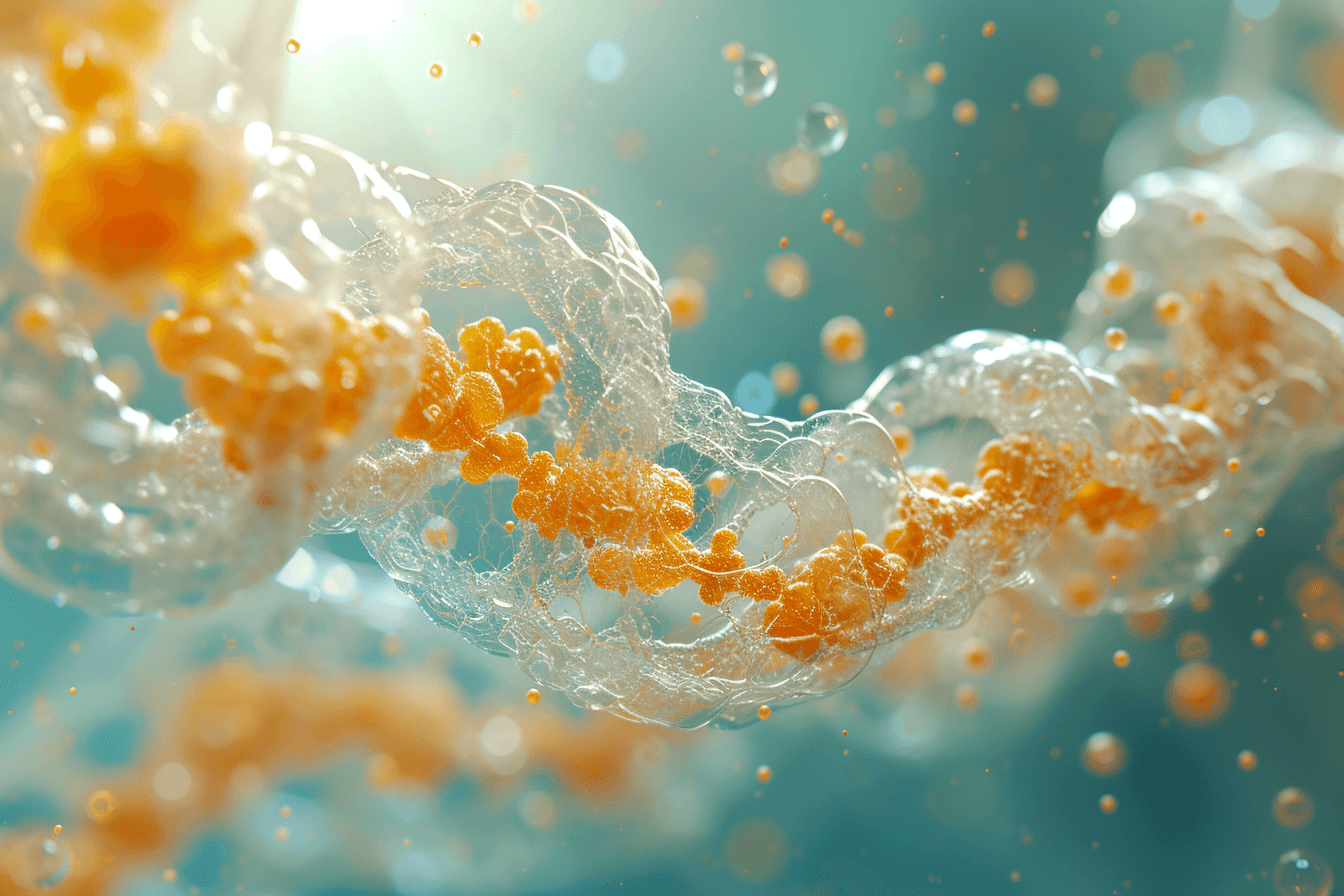
What if the secret to slowing down aging isn’t hidden deep within your DNA but instead lies in the delicate outer shell of your cells? For years, scientists thought cells had only two options when damaged: repair themselves or die. But cutting-edge research has now revealed a startling third option—one that accelerates aging and fuels diseases like Alzheimer’s. These "zombie cells" stubbornly linger, releasing harmful toxins and spreading cellular dysfunction. The key to stopping them? Protecting your cell membranes, the fragile yet crucial barriers that determine how well—and how long—your cells function.
Key Takeaways
-
Cellular senescence is a newly discovered aging pathway. Instead of dying when damaged, some cells enter a "zombie" state, where they release inflammatory compounds that speed up aging and disease.
-
The integrity of your cell membranes determines cellular aging. When cell membranes suffer damage, the extent of that damage influences whether a cell repairs itself dies, or turns senescent.
-
Essential fatty acids (EFAs) are critical for membrane health. Consuming unprocessed EFAs, found in foods like fish, nuts, and seeds, may help maintain membrane integrity and slow aging.
Your Cell Membranes Are Under Attack—Here’s How to Protect Them
Groundbreaking new research reveals a key reason your cells get old and turn into zombie or senescent cells. It has to do with their membranes. The findings open the door for developing new strategies to stop many illnesses caused by aging, such as Alzheimer’s disease.
Cellular Senescence
For decades, researchers believed that a damaged cell membrane either repairs itself or dies, but then they discovered a third option: senescence.
A damaged or aging cell can also become a senescent or zombie cell, promoting diseases like Alzheimer’s disease and furthering aging at the cellular level.
Cellular senescence occurs when cells have either come to the end of their natural life or are old and damaged yet can’t be repaired. Instead of dying, they hang around and spill out toxins and inflammatory compounds that promote aging in your brain and your body.
As anti-aging scientists worked to better understand senescence, they recently discovered one reason it happens in the first place…
Cellular Membranes Are Easily Damaged
Our cells are surrounded by a fragile membrane that’s only five nanometers thick. For comparison, that’s about a twentieth of a soap bubble!
This fragility is a problem because it allows the membrane to be damaged by toxins, pathogens, and physiological activities, including muscle contraction and tissue injury.
To cope with such damage, cells are equipped with mechanisms to repair membrane damage, but only up to a point. If the damage is too extensive, the cell is induced to die. “Repair or die” has remained the established view of a cell's life cycle until the discovery of senescence.
Researchers believe the recent discovery of senescence in cell membranes will have far-reaching implications for slowing the way your brain and your body ages.
Membrane Integrity Decides How You’ll Age
“When I started this project, I simply aimed to understand the repair mechanisms of damaged cell membranes,” recalls Professor Keiko Kono, at the Okinawa Institute of Science and Technology in Japan. “Unexpectedly, we ended up discovering that cell membrane damage, in a sense, switches cell fate.”[1]
Dr. Kono’s team discovered this by using budding yeast (Saccharomyces cerevisiae), which is considered the gold standard for studying fundamental aspects of cell biology. The team also used cultured human fibroblast cells, which help form your body’s connective tissues.
Scientists discovered that quite a few genes in yeast play a role in fixing up damaged cell membranes. When they tinkered with these genes, they saw some interesting results. Yeast missing certain repair genes were like klutzy repairmen - they couldn't patch up their membranes very well and didn't live as long. On the flip side, when they cranked up these repair genes' activity, the yeast lived longer than usual.
Basically, this research shows there's a pretty strong connection between how well a cell can maintain its outer barrier and how long it lives. It's like the old saying "Good fences make good neighbors," but on a cellular level - good membranes make for longer-lived cells!
Next, the team turned to human cells to see if their findings would still ring true.
P53 Induces Senescence, Not DNA Damage
The scientists began testing normal human skin cells, called fibroblasts. They found that when they poked holes in the cell's outer layer - the membrane - in various ways, it made the cells age faster. It's like the cells were saying, "Ouch! That's it, I'm retiring early!"
But here's the cool part: when the scientists boosted the cell's ability to patch up these holes, it was like giving the cells a fountain of youth. They didn't age as quickly, just like the yeast.
Now, you might be wondering, "How does this whole cellular aging thing work?" Well, the researchers figured that out, too. It's like a domino effect. When the membrane gets damaged, calcium rushes into the cell. This calcium acts like an alarm bell, waking up a gene called p53. This gene is like the cell's boss, deciding when it's time to stop dividing.
What's interesting is that this whole process doesn't involve the usual suspect - DNA damage. Scientists have long thought DNA damage was the main culprit in cell aging. This discovery is like discovering a whole new way for cells to decide it's time to retire.
It's as if they've discovered a new language that cells use to communicate about aging.
Their discovery shows that with light damage, the membrane will be repaired; with heavy damage, the cell will be killed, but with middling damage, cells become senescent several days later, even when membrane resealing appears successful.
Explains A Key Reason For Cellular Aging and Illness
Although various triggers can cause cellular senescence, including DNA damage, telomere shortening, and cancer gene activation, little was known about this form of senescence. However, as Dr. Kono notes, it may be responsible for a considerable proportion of cellular senescence.
“The gene expression profile and bioinformatics suggested that cell membrane damage explains the origin of senescent cells in our bodies, specifically the ones near damaged tissues.”
Dr. Kono’s team concluded their experiments by writing in the journal Nature Aging that their results “highlight an underappreciated subtype of senescent cells…Our study, therefore, may provide one potential explanation for the origin of…senescent cells…and serve as a basis for developing new therapeutic strategies for…organismal aging.”[2]
Killing these senescent cells has become a key anti-aging strategy, and many human trials of drugs called senolytics are in progress. However, Dr. Kono focuses on preventing mechanical damage to the cell membrane to slow senescent cell production. “Then you can maintain your health longer. Ultimately, that’s the direction I’m going,” she said.
Dr. Kono likely has drug development in mind to protect the cell membrane from damage, but there’s no need to wait. The good news is the right nutrition is the key to protecting your brain cell membranes and the other cells throughout your body.
The Importance Of Essential Fatty Acids
Mitchell J. Ghen, D.O., Ph.D., author of four integrative medicine textbooks, informs us that “the only way to replenish the cell membrane and simultaneously effect positive, healthy, long-term changes” is by ingesting adequate amounts of the essential fatty acids (EFAs), linoleic acid, and alpha-linolenic acid.[3]
That’s because half the cell membrane is made up of fat, a quarter to a third of this contains EFAs (mostly linoleic acid); the other half is made from protein. Most Americans get more than enough protein but are deficient in usable EFAs.
The reason is that linoleic acid, used in polyunsaturated cooking oils and thousands of food products, is highly processed, adulterated, and chemically altered. The cell membrane still takes it up but won’t be fully functional.
Cholesterol is also incorporated into the cell membrane and gives it strength. It is also damaged by food processing and lowered by commonly used medications such as statins.
Our Takeaway
To maintain the integrity of your hundred trillion cell membranes throughout your brain and your body, incorporate EFAs into your diet. You can do this easily by eating meat, fish, full-fat dairy, fruits, vegetables, and raw and unprocessed nuts and seeds.
It’s also a good idea to take supplements such as quercetin, fisetin, and grapeseed extract, which are the top three natural senolytics shown in anti-aging science.
Summary
Recent research has uncovered a surprising new factor in aging: the integrity of your cell membranes. Scientists have long believed that damaged cells either repair themselves or die, but a third fate—senescence—has now been identified. These "zombie cells" linger in the body, releasing harmful substances that accelerate aging and disease. The discovery suggests that maintaining strong cell membranes is key to preventing cellular senescence. Essential fatty acids (EFAs) play a crucial role in this process, offering a natural way to support cell health and potentially slow aging. By incorporating EFAs through diet and supplements, we may hold the key to longevity and better health.
Frequently Asked Questions
What are senescent or "zombie" cells?
Senescent cells are damaged or aging cells that stop dividing but refuse to die, releasing harmful compounds that contribute to aging and disease.
How do cell membranes influence aging?
Cell membranes protect the cell, and when they become damaged, they can trigger senescence, accelerating the aging process.
Can we reverse cellular senescence?
While we cannot completely reverse it, research suggests that maintaining healthy cell membranes with proper nutrition and supplements may reduce senescent cell accumulation.
What foods help protect cell membranes?
Foods rich in essential fatty acids, such as fish, nuts, seeds, and unprocessed oils, support membrane integrity and may slow aging.
Are there supplements that support cell membrane health?
Yes, supplements like quercetin, fisetin, and grapeseed extract are natural senolytics that may help reduce senescent cells and promote healthy aging.
- OIST Damage to cell membranes causes cell aging 22 February 2024
- Suda K, et al. Plasma membrane damage limits replicative lifespan in yeast and induces premature senescence in human fibroblasts Nat Aging. 2024 Mar;4(3):319-335.
- Peskin BS and Rowen RJ PEO Solution Pinnacle Press 2018
